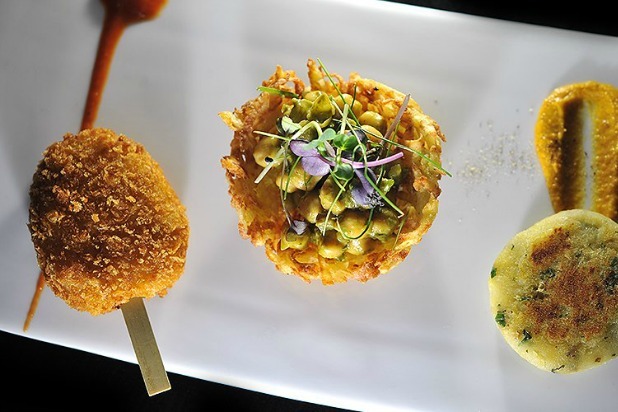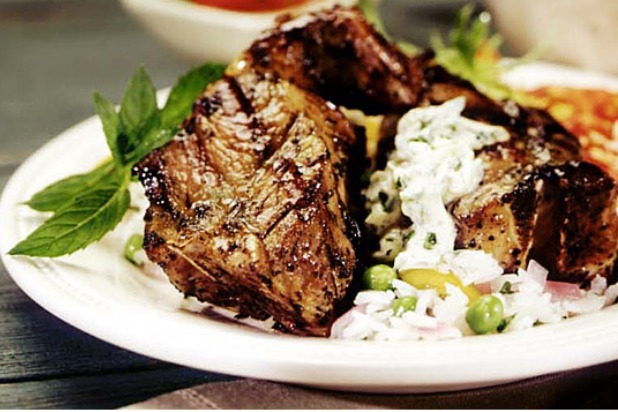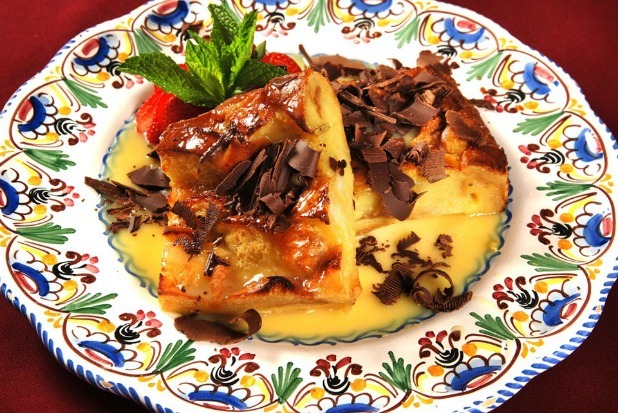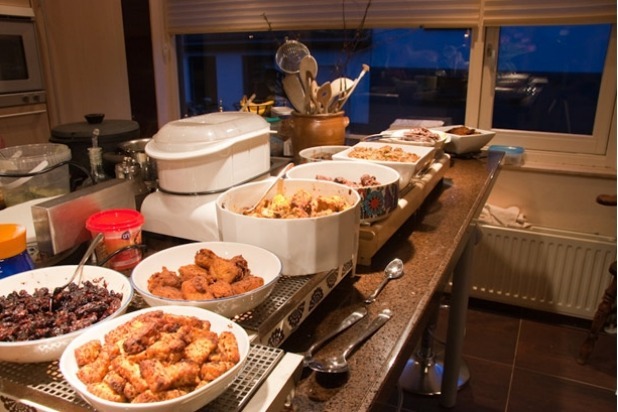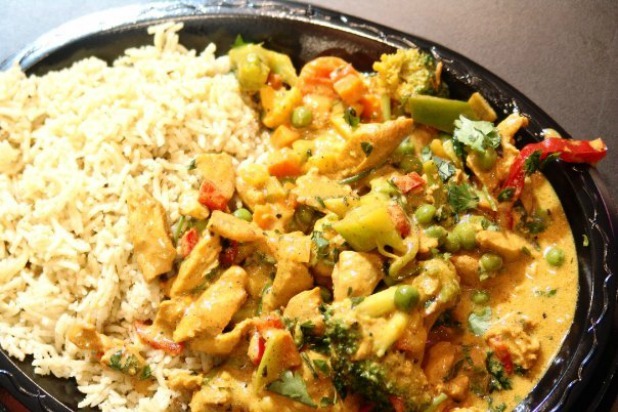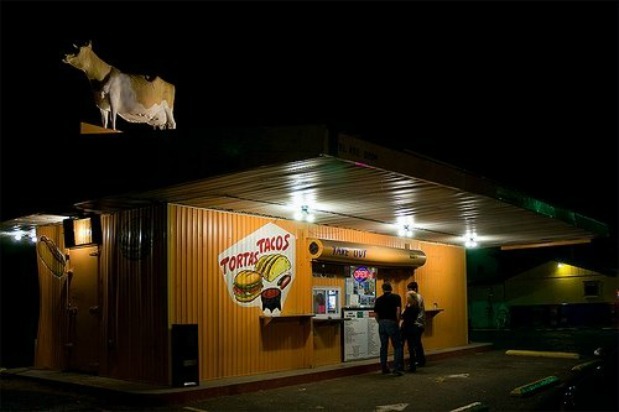13 Cuisines Surprisingly Far From Home
The popularity of Indian food in London might best be illustrated by the British song "Vindaloo," the unofficial anthem of the 1998 World Cup that refers to a spicy Indian curry dish. Indians make up the largest population of immigrants in London. Besides the popular Brick Lane neighborhood in east London, head to Southall, the most authentic Little India, just outside of London's city center.
Where to eat: Browse the spice markets of Southall's Broadway, such as Dokal and Sons, then stop into Rita's Samosa Center for their namesake dish. Back in London proper, try dosas (rice and lentil crepes) at Dosa 'n Chutney, or swing over to Zaika, one of London's first Indian restaurants to receive a Michelin star.
Algerian Food in Paris
While it should go without saying that Paris is one of the world's culinary capitals, you'd be remiss to not enjoy North African cuisine on a trip to the City of Light. France hasn't historically had the best of relationships with its Maghrebi immigrants, but there's no arguing that the flavors of Algeria are a welcome alternative to heavy French fare.
Where to eat: Le Monde de Léa in Paris' 18th arrondissement is a cozy café-restaurant where you can enjoy couscous along with live jazz. Hearty lamb tagines and couscous paired with Algerian wine can be found at Le Zerda Café. Forget macarons and baguettes, and head straight to La Bague de Kenza for Algerian pastries and kesra bread, an addictive flatbread.
Middle Eastern Food in Dearborn, Mich.
America's most concentrated population of Arab-Americans isn't in a metropolitan capital, but in Dearborn, Mich. Immigrants from Lebanon, Syria, Iraq, and other Arab nations came to Michigan to work in the auto industry. Today, the city's rich cultural heritage has made Dearborn a culinary landmark.
Where to eat: Traditional Middle Eastern plates can be found at Al-Ameer or La Pita. For Middle Eastern pastries, head to Shatila. If you're lucky enough to visit in the summer, you can try more delicacies at Dearborn's annual Arab International Festival. Although the 2013 festival was postponed, it promises to return in 2014.
Portuguese Food in New Bedford, Mass.
The whaling industry in New Bedford attracted the first Portuguese immigrants, and the waterfront town is the perfect setting for dishes like bacalhau (salted cod), or caldeirada (fish soup).
Where to eat: Antonio's is a local favorite for littlenecks, fried sardines, and vinho verde (Portuguese wine). Traditional fare can also be found at the city's annual Portuguese Feast, or Amaral's Market, a destination for Portuguese gourmet goods.
Basque Food in Boise, Idaho
"Eat, drink, be Basque," goes the saying, but you don't have to travel to France or Spain to try Basque dishes like lamb stews, pork and pimientos, cod, or pintxos (Basque tapas). Instead, head to Boise, Idaho, where one in 10 residents is of Basque descent.
Where to eat: The first Basques came to Idaho to work on sheep farms, and Boise's Leku Ono restaurant is owned by a former Basque shepherd. Boise's Basque block runs along Grove Street, and is home to an expansive Basque specialty market. And no trip to Boise's Basque country would be complete without a visit to the bustling Bar Gernika.
Korean Food in Los Angeles
In and out of Koreatown, Los Angeles is home to a thriving Korean food culture. There are so many choices that one could argue that Koreatown (at least) "doesn't need another BBQ place — well, at least not another Korean one." There's more than BBQ to discover, though, with a large number of outlets also serving regional delicacies. Make sure to also check out the specialty shops focusing on ingredients including tofu and kimchi.
Where to eat: Park's BBQ in Koreatown is consistently referenced for the quality of its meat, as well as its banchan (small side dishes served with rice). If you're wanting a sample of kimchi, South Korea's national dish, then look no further than Kae Sung Market.
Cuban Food in Tampa, Fla.
Miami has a huge Cuban-American population, but Tampa, Fla., is a Little Cuba in itself, thanks to the Cuban cigar industry that flourished in the early 1900s in Tampa's Ybor City. There are plenty of hidden mom-and-pop gems to be discovered in this Gulf Coast town.
Where to eat: Cuban-American locals get their fix of black beans and rice, ropa vieja (shredded steak in tomato sauce), and picadillo (seasoned ground beef served over rice) at Arco Iris on Columbus Drive. The Columbia Restaurant in Ybor City is a Cuban fixture, and while natives swear you can't find a Cuban sandwich like they used to make them, Pipo's makes a fine rendition.
Indonesian Food in Amsterdam
Indonesia gained independence from the Dutch in 1945, but the colonial relationship has brought Indonesian culinary influence to the Dutch capital. If you can't get to Indonesia or you just want to save on airfare, Amsterdam is the next-best stop for Indonesian cuisine.
Where to eat: Go to Sama Sebo or Tempo Deoloe for rijstaffel, an Indonesian feast that consists of rice surrounded by sides. Restaurant Blauw serves specialties like shrimp crackers and pumpkin-coconut soup.
Japanese Food in São Paolo
São Paolo, Brazil, has the largest Japanese population outside of Japan, according to the Brazilian embassy, with the first Japanese immigrants coming to work on Brazil's coffee plantations. Besides being a showcase for the iconic architecture of Japanese-Brazilian Ruy Ohtake, Brazil's largest city is a destination for Japanese cuisine.
Where to eat: Head straight for Liberdade, São Paolo's Little Japan. Each Sunday the neighborhood is host to a Japanese market, Feira da Liberdade, where you can taste traditional Japanese dishes like yakitori (a barbecue kebab) or lamen, a type of ramen. Eat at Aska Lamen, one of the city's best ramen houses, or for upscale sushi, head to Jun Sakamoto.
Somali Food in Minneapolis
Minneapolis is home to the largest Somali population in the U.S. This cuisine (which was historically influenced by Italian, Middle Eastern, and Indian traditions) is reported to have been somewhat under-the-radar as compared to other ethnic outlets of the Twin Cities, but Somali restaurants have increasingly acquired a mainstream presence in recent years. Expect delicious spicy stews and rice pilaf as well as well-seasoned beef, chicken, and lamb.
Where to eat:
Safari Express in the Midtown Global Market is known for its camel burger, or an accessible Somali-American hybrid menu item. Don't be fooled, though — the restaurant also serves traditional Somali cuisine that is just as popular with the locals as it is with the natives.
Chinese Food in Vancouver
Yes, Chinatowns are a common fixture in North American cities, but Vancouver is a hot spot for Chinese cuisine. Maybe it's Canada's immigration-friendly policies or Vancouver's proximity to great seafood, but whatever it is, a trip to this seaport city would be incomplete without a tour of its Chinese eateries.
Where to eat: Order the Golden Dungeness Crab at Ken's Chinese Restaurant. Try dim sum at Kirin Restaurant, Peking duck at Yan's Garden, or dumplings at Lin's.
Mexican Food in Durham, N.C.
Among barbecue joints and suburban strip malls of the North Carolina triangle, there are more than a few authentic and delicious Mexican taquerias. Some operate out of trucks (and were doing so before the trend caught on), others in gas stations or specialty grocers, and some have an established restaurant. No matter the venue, some of the best tacos, tortas, and traditional plates are easily found.
Where to eat: For the best barbacoa, one must go to Taqueria La Vaquita. The roadside stand with picnic tables is hard to miss — there's a cow on the roof. Also be sure to sample the lengua; tacos are best.
Turkish Food in Berlin
Turkish guest workers immigrated to Germany in the 1960s and 1970s, and since then Berliners have embraced Turkish cuisine, with donor, or kebab, becoming just as pervasive as 'wurst in Germany.
Where to eat: You can't go to Berlin without eating donor kebab (rotating grilled spits of meat that are typically served wrapped in pita). There's no shortage of stands on most street corners to fulfill cravings. Kreuzberg, Berlin's Turkish neighborhood, is home to a weekly market where you can find traditional Turkish goods. Hasir Restaurant is a must, where in addition to donor you can try other traditional Turkish specialties.
